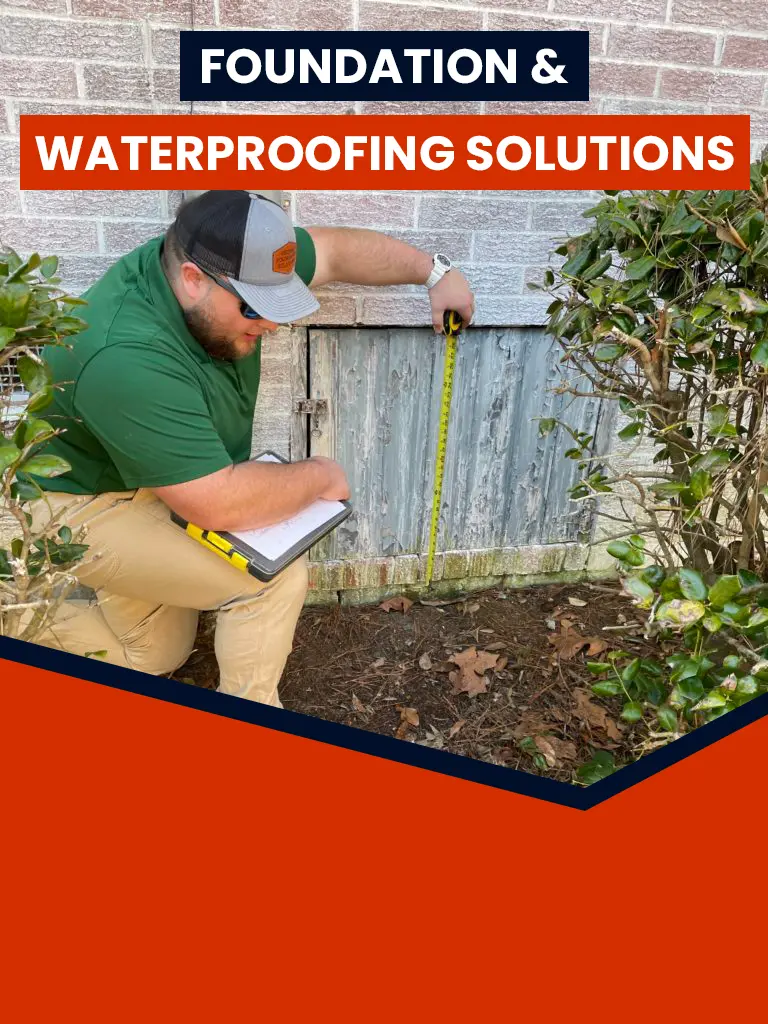Crawl space encapsulation is essential for maintaining a healthy and efficient home, yet your crawl space may be an overlooked source of multiple issues. Problems such as musty odors, poor indoor air quality, bouncy floors, or rising energy bills could all stem from a poorly maintained or unsealed crawl space.
Proper crawl space encapsulation not only addresses these issues but also helps prevent further damage. In this article, we’ll explore the most common causes of crawl space problems and explain how crawl space encapsulation can provide lasting solutions to protect your home.
Common Causes of Crawl Space Encapsulation Problems
1. The Stack Effect
The stack effect refers to the natural process where warm air rises and cooler air sinks. In your home, this means hot, humid air from the crawl space rises into your living areas, carrying moisture, dirt, allergens, and even mold spores with it. This air can negatively affect your indoor air quality and potentially cause other problems throughout your home.
To combat the stack effect, encapsulating your crawl space is a highly effective solution. This process seals off the space, preventing outside air and moisture from entering, thereby stopping the stack effect from impacting your home’s air quality.
2. Poor Foundation Construction
From the 1950s through the 1990s, many homes were built with crawl space doors or vents, under the belief that increased airflow would prevent humidity buildup. However, this has been proven incorrect. Instead, these openings can exacerbate the stack effect and allow excess moisture and air into the crawl space, worsening the problem. If the vents or doors are broken or unsealed, the damage can be even more significant.
3. Inadequate Drainage
Poor drainage in the soil surrounding your home can lead to significant crawl space issues. In areas like Georgia, where clay soil is common, poor drainage is a frequent problem. When water is unable to drain properly, it pools around your home’s foundation and seeps into the crawl space. This excess moisture can lead to long-term structural and air quality issues if not addressed.
4. Rotting Support Beams and Floor Joists
Excess moisture and humidity in your crawl space can lead to significant structural issues, making crawl space encapsulation a crucial solution. Without crawl space encapsulation, wooden beams and floor joists are at risk of rotting or developing mold due to persistent dampness. Over time, wood rot compromises the integrity of your home’s structure, causing crumbling or sagging floors. Crawl space encapsulation effectively prevents this by sealing out moisture and maintaining a dry environment. To check for potential wood rot, gently puncture the wood with a tool—if it feels soft or punctures easily, it’s time to consider crawl space encapsulation to protect your home’s foundation.
Rotting support beams can lead to sagging or bouncy floors inside your home. If you notice these signs, it’s essential to consult a professional immediately to address the issue before it worsens.
5. Weather Conditions
The dry summer weather in areas like Georgia, combined with the clay soil found there, can lead to additional crawl space problems. Hot conditions cause the soil to shrink and crack, reducing its ability to properly support your home’s foundation walls and floor joists. Over time, this can compromise the stability of your crawl space.
Signs of Crawl Space Issues
Since crawl spaces are often hidden from view, problems can go unnoticed until they begin to affect the rest of your home. Common signs that indicate crawl space issues include:
- Musty odors throughout the house
- Bouncy or sagging floors
- Pests in or around your home
- High indoor humidity levels
- Rising energy bills
- Standing water in the crawl space
- Visible mold or mildew

If you’ve noticed any of these signs, it may be time to address potential crawl space problems.
How to Protect Your Crawl Space
One of the most effective ways to prevent crawl space issues is through encapsulation. Encapsulation involves sealing your crawl space off from external elements like moisture, pests, and fluctuating temperatures. The process typically includes installing a heavy-duty vapor barrier, sealing off vents, properly securing the crawl space door, and installing a dehumidifier, among other solutions.
Given the variety of factors that can cause crawl space damage, it’s important to tailor the solution to your home’s specific needs. At Georgia Foundation Solutions, we offer a range of crawl space encapsulation solutions designed to provide lasting protection. Contact us today to learn more about how we can help protect your home from crawl space problems.

